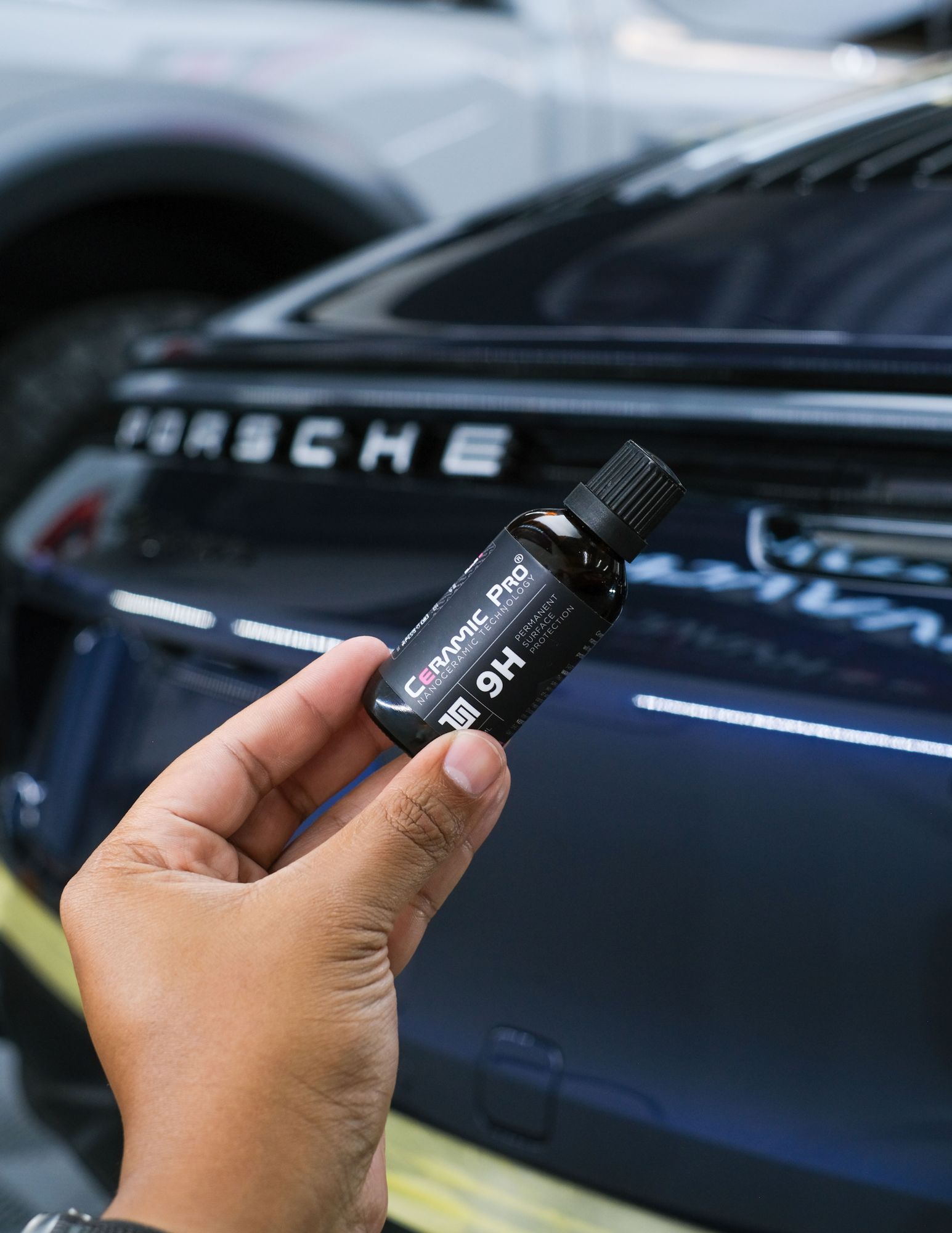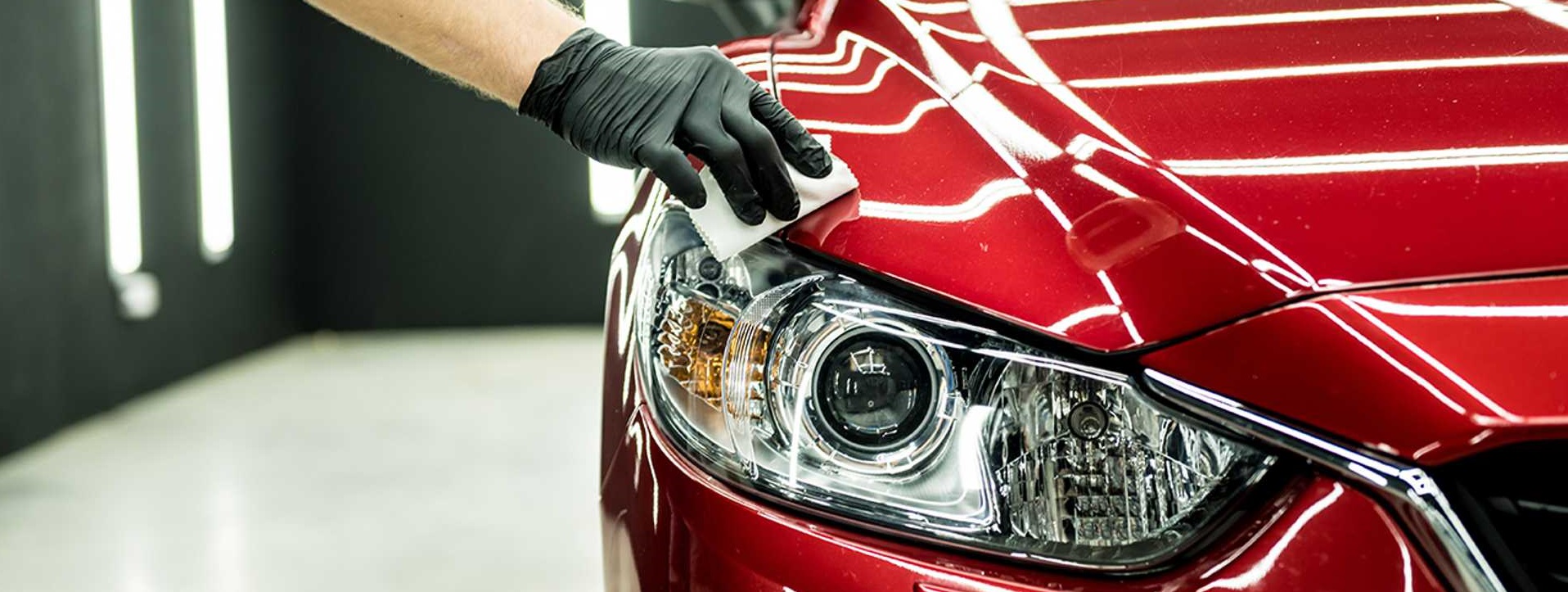Ceramic Coating: The Future of Automotive Surface Protection
Ceramic Coating: The Future of Automotive Surface Protection
Blog Article
Ceramic Coating vs. Typical Wax: Which Offers Much Better Long-Term Security?
The dispute between ceramic coverings and traditional wax for vehicle defense has actually gathered substantial interest amongst automotive lovers and specialists alike. While both offer the purpose of safeguarding paint, their distinctions in toughness, application, and long-term upkeep costs might affect a consumer's option. Ceramic coverings flaunt premium longevity and resistance to environmental aspects, yet the intricacy of their application increases concerns regarding access and usefulness. As we check out these contrasting choices, it comes to be important to think about not only the instant benefits however also the implications for vehicle care in time.
Review of Ceramic Covering
Ceramic layer has gained considerable popularity amongst automobile enthusiasts and detailers alike as a result of its innovative protective high qualities. This innovative innovation is created to create a sturdy, hydrophobic guard over a lorry's paint surface, dramatically improving its resistance to ecological contaminants such as dirt, UV rays, and chemical stains. Unlike standard wax, which provides a short-lived layer of protection, ceramic finishes bond at a molecular level with the paint, offering lasting toughness-- commonly expanding past two years with proper upkeep.
The application procedure involves thorough prep work of the lorry's surface area, consisting of cleansing and polishing to make sure optimal attachment. Once used, the finish cures to form a robust layer that not just adds depth and gloss to the paint but additionally streamlines maintenance. With its hydrophobic buildings, ceramic layer allows water and dirt to glide off more conveniently, minimizing the regularity of laundries and minimizing the threat of swirl marks.
Moreover, ceramic finishes are offered in various solutions, permitting users to choose products customized to their details demands and choices. Generally, ceramic covering represents a substantial advancement in paint defense technology, delivering premium efficiency compared to traditional alternatives.
Review of Conventional Wax
Generally related to as a staple in automotive care, wax offers as a popular selection for those seeking an uncomplicated approach to boost and safeguard their automobile's paint - ceramic coating. Automotive wax commonly comprises natural components, such as carnauba, or artificial compounds, created to produce a protective layer on the surface area of the paint. This layer not just enhances the lorry's gloss and beam but additionally provides a barrier versus ecological impurities
The application of wax is typically easy to use, making it accessible for both specialists and DIY lovers. It can be applied by hand or maker, permitting versatility in the describing procedure. When applied, wax needs a curing duration, after which it solidifies to develop a protective covering. Wax is additionally recognized for its capability to drive away water, promoting a beading effect that aids in the avoidance of water areas and deterioration.
However, while wax works for improving the aesthetic appeal of a car, it is very important to note that the security it uses may require a lot more frequent reapplication contrasted to alternative items, such as ceramic finishings. In general, traditional wax stays a favored option for those prioritizing simplicity of use and immediate visual improvement.
Durability and Long Life Contrast
While both ceramic layers and conventional wax offer protective advantages for automobile paint, their durability and longevity differ substantially. Traditional wax, usually made from natural carnauba or artificial polymers, usually supplies a protective layer that lasts approximately 3 to six months. This relatively short life expectancy demands routine reapplication to keep optimal defense.
In contrast, ceramic finishings are crafted from advanced nanotechnology, creating a covalent bond with the paint surface. This leads to a robust, hydrophobic layer that can sustain for 2 to five years, depending on the item and ecological conditions. The remarkable longevity of ceramic coverings is credited to their chemical structure, which supplies enhanced resistance to scratches, UV rays, and oxidation.

Security Versus Environmental Aspects
Protecting a car's paint from ecological factors is crucial for preserving its appearance and worth over time. Automobiles are regularly revealed to a variety of aspects, consisting of UV rays, bird droppings, tree sap, acid rainfall, and roadway gunk, every one of which can endanger the stability of the paintwork.
Ceramic finishes give a durable defense against these ecological assailants. Unlike typical wax, which can deteriorate rapidly under UV exposure, ceramic coatings create a sturdy, hydrophobic layer that resists the damaging effects of sunshine and ecological pollutants. This innovative modern technology creates a chemical bond with the vehicle's surface area, supplying superior protection that lasts for many years, also in harsh problems.
Standard wax, while much easier to use, normally requires constant reapplication and uses limited resistance to pollutants and UV rays. With time, it can break down, leaving the paint vulnerable to scrapes and oxidation. In contrast, look at this web-site ceramic finishings preserve their protective qualities much longer, dramatically minimizing the risk of paint damages and ensuring that the vehicle keeps its aesthetic appeal. Because of this, ceramic coverings are progressively acknowledged as the premium selection for lasting defense against environmental factors.
Application and Upkeep Differences
The methods of application and subsequent upkeep for ceramic finishes and traditional wax vary dramatically, affecting the total customer experience and performance of each product. Ceramic layers need a more detailed application process, usually entailing surface area preparation that consists of cleaning, sanitizing, and brightening the automobile. When the surface prepares, the ceramic coating is used in a controlled environment, frequently requiring expert proficiency to guarantee correct curing and bonding to the paint.

While both items boost vehicle appearance, the longer-lasting security offered by ceramic coatings may validate their first financial investment, regardless of the more requiring application process. Conversely, typical wax stays a prominent selection for those seeking a simpler, albeit temporary, service.

Conclusion
In final thought, ceramic finishes demonstrate substantial advantages over conventional wax in regards to resilience and environmental protection. With a life expectancy expanding 2 to 5 years and premium resistance to UV rays, dirt, and chemical stains, ceramic finishes supply a much more reliable option for lasting lorry upkeep. The application process may call for professional experience, the resulting expense savings and minimized frequency of reapplication emphasize the worth of ceramic layers for those seeking ideal automobile security.
The discussion in between ceramic coatings and conventional wax for lorry defense has actually garnered significant focus among automobile fanatics and specialists alike. Unlike conventional wax, which gives a temporary layer of protection, ceramic coverings bond at a molecular degree with the paint, providing durable longevity-- frequently prolonging past two years with correct maintenance.
While both ceramic finishings link and conventional wax offer safety benefits for auto paint, their resilience and long life vary substantially. For automobile lovers looking for lasting protection, ceramic finishes offer see post an engaging benefit over conventional wax products.
In final thought, ceramic finishes demonstrate significant advantages over typical wax in terms of durability and environmental defense.
Report this page